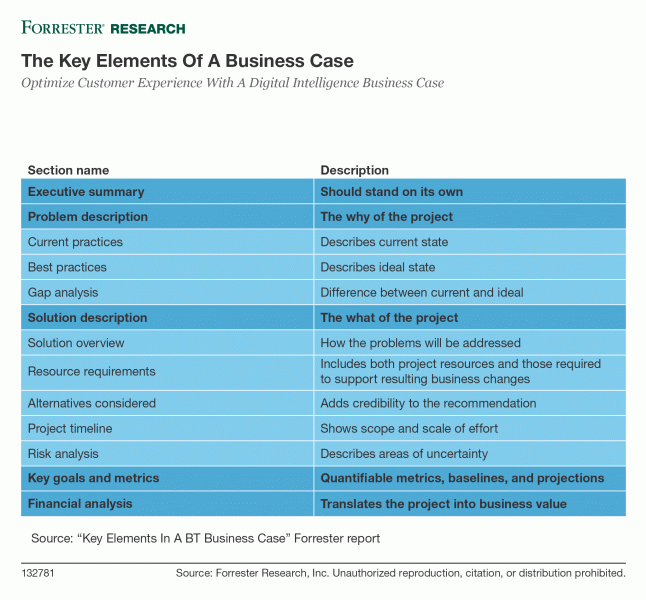How To Get Resources For Digital Intelligence
Congrats. You, like digital customer insights pros in many firms, continue to advance your ability to provide insights about your customers’ digital behavior. However, you’re leaving money on the table. Too many digital analytics teams still operate in separate silos aligned with the firm’s channels and org chart, which means that you're not keeping up with today's device-hopping customers. You need to invest in changes that measure customers wherever they actually are, which is across all of your digital touchpoints. And to do that, you need an effective business case.
A business case is not a blah, blah, blah checklist item. No matter what your firm’s processes may be for budget requests, headcount requisition, or procurement, you need a management tool that tells the story of the business value you’ll deliver with the investment you’re requesting. And that tool is a business case. We’ve done the work to help you pull together an effective one. See the bottom of this post for a summary of the key elements you'll need.
Here’s where you’re heading with your business case. Your analytics must mature to become what Forrester calls “digital intelligence” – a holistic view of your customers that drives continuous optimization of the digital customer experiences that matter most to business outcomes. This integrated approach to your data and analytics technologies and practices reaps value such as growing sales by connecting customer data that lets you see across formerly siloed product lines or channels. Visibility across channels enables insights that can drive improvement in holistic business metrics that matter, such as churn, lifetime value, customer satisfaction, efficiency. Your business case will outline that holistic story.
You’ll get plenty of mileage from an effective business case – well beyond just a budget request. Your case is a strategy, a tool for driving alignment across disparate stakeholder groups, an agenda for meetings, a communication tool, and a source of re-usable content for the inevitable and necessary Powerpoint presentations you’ll need — immediately and in the future.
Building an effective business case requires a formal team, a standardized structure, and most importantly, a relentless quantitative focus on outcomes. An executive from a digital platform firm said, “There's a lot of momentum for bringing new or enhanced capabilities to the table that should drive better outcomes. But people struggle to talk about these capabilities in that context. The business case must be an outcome-based story.”
There’s no need to reinvent the wheel when building a business case: the chart below gives a summary of the key elements you’ll need. Forrester clients can use my report, which I wrote along with James McCormick, for additional frameworks and details on success factors for digital intelligence business cases that work. Those factors include:
- Focus on what’s measureable and best aligned to near-term and midterm strategy
- Plan and execute pilots as part of your approach
- Build in resources for driving user adoption of new capabilities
- Use caution about including customizations in your business case
Go get ‘em!

